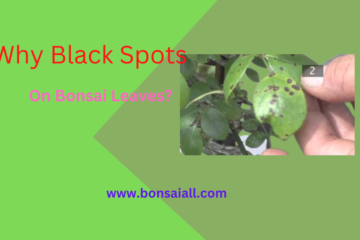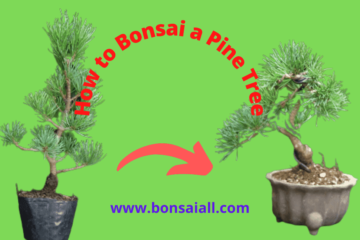Bonsai is a Japanese art of miniature potted trees that has become very popular. Simple bonsai trees are easy to find, but you may be wondering how much do bonsai trees cost to your home decor. We’ve researched it to help you know what to expect.
On average, a new bonsai plant from any local nursery will cost about $25. But there are instances where bonsai trees have sold for over a million dollars.
The age of the tree, its condition and the container it is in are important factors in determining bonsai value.
So, how can you tell if a bonsai tree is worth $30 or $60,000? Where can you buy these beautiful works of art? Are there bonsai species that do better in containers than others?
Read on to learn about the financial variables surrounding the Japanese bonsai industry.
How much do bonsai trees cost?
Content Overview
Asking how much do bonsai trees cost are like asking how much a painting costs. Age, rarity, size, health, birthplace and quality all affect price. Some bonsai trees are incredibly expensive, while others cost very little.
What affects the price of a bonsai tree?
There are several main factors that make bonsai trees so expensive. So, what are the main factors that make bonsai tree prices change? Factors affecting bonsai tree prices are discussed below-
Bonsai Tree Age
First, tree age is often a major factor. If you take two trees identical in species, pot, size, etc., and one is twice the age of the other, the older tree will be worth considerably more.
Some trees are very old, and you can’t tell just by looking at a bonsai how old it is. You might be able to guess, based on how textured the bark is and how well established the roots are, but most of the time you can guess. However, it makes a difference in the value of the tree.
Younger bonsai trees that look mature are also more expensive. If your tree looks young and immature, it won’t be as valuable as a tree of the same age that looks older. It’s frustrating, but that’s just how art works.
Read More :How Old Are Bonsai Tress? Bonsai Tree Lifespan
The rarity of the bonsai tree affects the cost
Unusual species of bonsai trees can get high prices. Bonsai are grown all over the world. Some species of bonsai tree are not often seen in the UK. Their rarity can drive up prices, as many bonsai gardeners want to have one of every species of bonsai tree they can find. Besides this the style in which the bonsai is grown. Root-on-rock style, windswept style, and raft style bonsai trees are less common, and therefore sometimes more expensive.
The Styling of Bonsai Tree Affects the Price

You might also additionally have visible bonsai bushes which might be literal works of art. Their creators have sculpted and shaped them and trained them to produce fantastic shapes and growth intricacy, and if you want a bonsai like this, you’re going to have to pay a lot for it. After all, they are one in every of a kind!
These types of trees take a lot of time to make, so you won’t be surprised to learn that they cost a lot. Someone has spent hours caring for them, and there will never be another specimen like it on earth. Sometimes, a few years are poured proper right into a single tree.
Careful styling is a practiced art, and you’ll likely find that you can’t do it at home by yourself, even if you have the patience. If you want to make something extraordinary, you need to know how it’s done – and you’ll find it’s a lot easier to buy something made by an expert!
There is a juniper strain that is more than thirty years old with an outer branch that stretches up to two meters. The height of the bonsai tree must be one meter or less, you can imagine what a remarkable achievement this is; The tree is completely self-supporting, which is amazing to see.
Styling a bonsai tree is probably one of the biggest determinants of price, although of course, other aspects are relevant. However, since we cultivate bonsai trees for their aesthetics, it makes sense that the biggest determinant of a tree’s overall aesthetic will have the biggest impact on its price.
You may find that you are “drawn” by certain plants and less interested in others. Because each specimen is unique, this is one of the best parts of bonsai plants!
Read More : Bonsai Styles-A Detailed Guide for Beginners
The size of a bonsai tree can increase the price
Larger bonsai trees can be more expensive than smaller ones, although this is certainly not always the case. We often have metre-tall bonsai trees which are much less expensive than other smaller trees. Therefore, larger size bonsai trees are usually more expensive in size and earlier.
How Healthy the Bonsai Tree Affects Price
Obviously, whenever you buy a plant, the health of the plant affects the price. You may have picked up “dollar plants” that have been left in the sun too long, haven’t been watered or otherwise lacked care from the nursery or store that sells them.
These plants are usually sold more cheaply, and this may also be the case with bonsai plants. Bonsai trees are just as vulnerable to disease and pests as any other plant, and although growers try to breed healthy, pest-resistant plants, the health of the plant certainly makes a big difference to how valuable the plant is.
If you buy an unhealthy bonsai tree, make sure you get it at a low price. This makes up for the fact that you have to devote a lot of extra time and attention to nurturing it – and there’s a risk that it won’t fully recover.
The Bonsai Container Affects the Price
It may seem strange to say that the container makes a difference in how valuable a bonsai tree is, but it does. A cheap pot that has been mass-produced is worth much less than an antique or handmade pot, especially one designed just for that plant.
The pot also makes a big difference for aesthetics. Of course, you can repot a bonsai tree, so this factor is probably less important than many others, but it should be taken into account when you’re looking at bonsai trees and prices.
Read More : The Ultimate Guides How to Make Bonsai pots from Clay?
Better Trunk Thickness Bonsai Trees Increased Price

While this isn’t a hard and fast rule, having a thick trunk is generally considered very desirable in a bonsai tree, and again this is something that can take years to cultivate. Bonsai plants with thin trunks usually cost less, so pay attention to trunk girth when buying.
When you bonsai a tree, it is not easy to achieve thick trunks because the growth of the tree is so restricted. There are methods that can be used to increase the thickness of the trunk, but this adds to the overall cost of the bonsai tree.
You can look at two otherwise identical trees and you’ll find that the thicker trunk is worth more in most cases. Of course, narrower trunks may be more aesthetically pleasing if it’s the design the grower was going for, in which case a thinner trunk may increase the price, but in general, thicker trunks are considered better.
A common feature of girdling trees. A tree with lots of growth and healthy branches spread out in a pleasing manner is inevitably going to cost you more than a spindly tree that lacks growth.
The quality of a tree is judged on several factors, including:
- Silhouette
- Ramification (the fineness of branches that makes a bonsai tree look like a normal tree)
- branch establishment
- Trunk shape and durability
- Root spread
These things are among the most important factors that make bonsai trees expensive; A pleasing tree will certainly fetch a higher price than one that looks unbalanced, stumpy or generally unearthly.
Read More :How to Make Bonsai Trunk Thicker? [ 7 Easy Steps]
Where It Comes From
The origin of your tree can also make a difference in how much it costs. Bonsai grown in America may not fetch as high a price as bonsai grown in Japan or Korea.
Japanese bonsai trees are often the most expensive, as they are considered more “authentic” and perhaps more artistic. After all, it is often better to buy something from the place of origin.
However, this is not always true, as supply and demand also have a big impact. For example, if there is only one bonsai stockist near you, you may find that it costs much more to buy an American-grown bonsai tree than to buy one from an online seller that has stock from Japan.
This is of course very location-specific, but be aware that supply and demand can affect the price, as well as the original location. Don’t assume that a bonsai tree will be cheap just because it was produced nearby.
The main factor influencing the price of bonsai is quality
The biggest factor affecting the price of bonsai plants is quality. Quality itself depends on many factors, including root spread, trunk shape/movement, branching, spreading and silhouette. The quality of the container is also important. Sometimes bonsai plants have a presence that is hard to define, they just have the wow factor.
What makes some bonsai trees so expensive?
Remember that when you buy a bonsai tree, it’s really time that you’re buying. It is the time and skill of the bonsai grower. Bonsai trees can take decades to grow. On the other hand, you can sometimes make a nice looking bonsai tree in an afternoon. This is another thing that makes bonsai attractive to us.
Conclusion
We hope we have inspired you to find a bonsai plant! Whether you’re interested in caring for a new bonsai tree or auctioning off an antique tree, you’ve got our support!
Remember, old trees are worthless if not well cared for! If you enjoyed this article, check out our other posts on bonsai trees below.
When in doubt, consult your local nurseries. Finally, enjoy the balanced Japanese art of bonsai.



